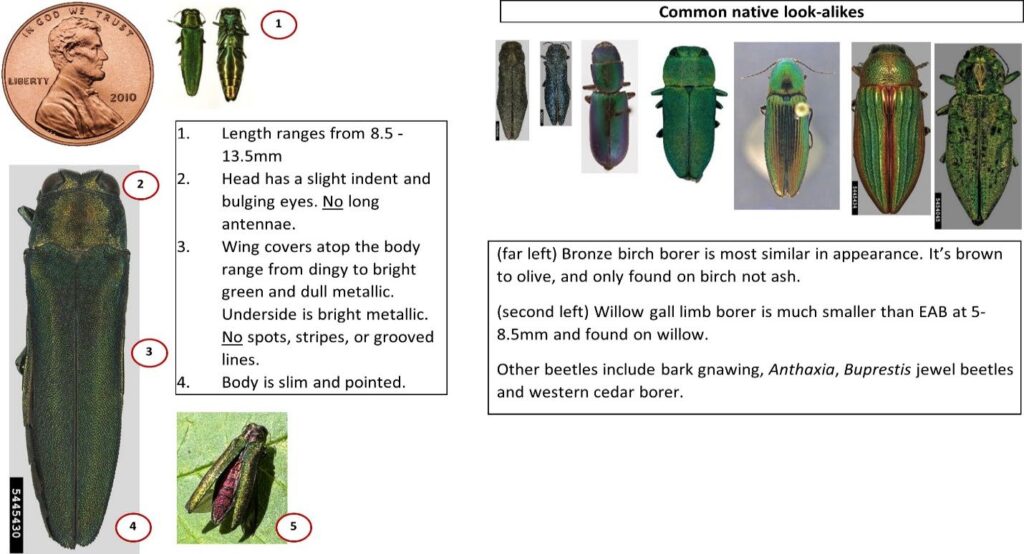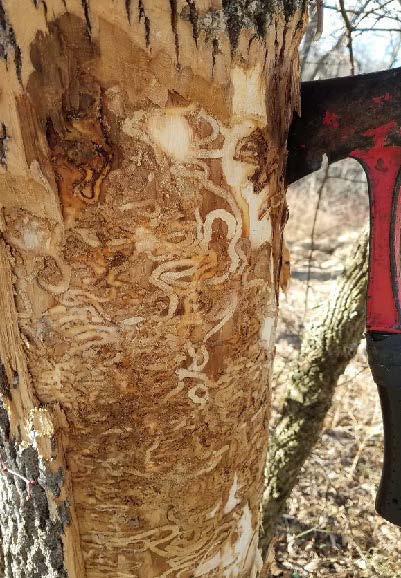Emerald Ash Borer Spotted in Oregon
By Nayt Boyt, Media & Outreach Specialist
I was born and raised in Michigan. Just about every summer weekend, I lived in the woods, hiking during the day and sleeping under the stars at night. During my many hours in the woods, I got to know the animals and plants around me. I learned many of the native shrubs and trees.
In 2002, the first Emerald Ash Borer (also known as EAB) was detected in Detroit. Despite fairly aggressive attempts to remove and reduce the EAB, it continued to spread and spoil. Although I did not realize it then, it would be only a matter of time before I witnessed the destructive force of a surprisingly small insect, the rapid spread and consequences of the Emerald Ash Borer.
Once they infect an ash tree, the larvae tunnel underneath the bark, feeding on the “vascular” system of the tree (where the tree moves its water and nutrients around). The tree starves to death. The adults exit the tree and continue to spread. On my camping trips all over Michigan, I began to see the signs in the forest: reduced ash canopy, little D-shaped holes in the bark, and the alien-looking snaking patterns inside the tree caused by the feeding larvae.
20 years after that first detection in Detroit, the Emerald Ash Borer has destroyed 100 million ash trees and continues to spread. On June 30, 2022, it was detected in Forest Grove, Oregon.
Because it is an invasive species, North America is not equipped to handle the Emerald Ash Borer. It has no natural predators, and the ash trees have no natural defense mechanisms. The result? Five species of ash tree are now listed as critically endangered. The Oregon Ash and other ash species in Oregon are in danger.
The good news is that Oregon has had time to prepare for this. The City of Eugene has a response plan, and the Willamette Valley will be the focus for the State of Oregon’s response. A key part of the response plan is detection, and you can help with this. Please report any sightings to the Oregon Invasive Species Hotline. Let’s work together to stop the destruction of our trees.

EAB and common Oregon lookalikes. C. Buhl
